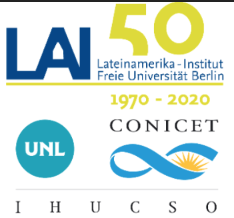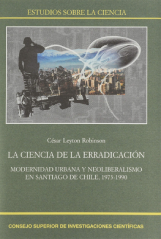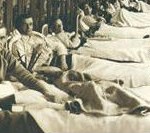Glauber Gonçalves | Casa de Oswaldo Cruz
Photos: Roberto Jesus Oscar
 Historians should not shy away from complexity, but rather find a way to narrate it, in order to provide new perspectives for health policy-makers. The comment was made last week by Jeremy Greene, associate professor and Elizabeth Treide A. McGehee Harvey Chair in the History of Medicine, at the Institute of the History of Medicine at Johns Hopkins University (Baltimore, USA). After lecturing on the therapeutic revolution at Casa de Oswaldo Cruz’s History seminar Encontro às Quintas, he gave us an interview.
Historians should not shy away from complexity, but rather find a way to narrate it, in order to provide new perspectives for health policy-makers. The comment was made last week by Jeremy Greene, associate professor and Elizabeth Treide A. McGehee Harvey Chair in the History of Medicine, at the Institute of the History of Medicine at Johns Hopkins University (Baltimore, USA). After lecturing on the therapeutic revolution at Casa de Oswaldo Cruz’s History seminar Encontro às Quintas, he gave us an interview.
“History can help our colleagues in other fields find their way out of blind corners by realizing that things that seem to be unmovable can be movable, the things that seem to be permanent are not necessarily permanent. There are paths in the past that were not taken and that could be explored”, he said. He also spoke about the role of pharmaceutical companies in the construction of the therapeutic revolution as a narrative and explained how the drug industry used advertisement and other communication strategies to associate their products with a progressive movement. Here are the key extracts from the interview with Jeremy Greene.
As a narrative, the therapeutic revolution has been criticized over the years. What are the main objections to it?
There are critics of the impact of therapeutic revolution both inside and outside of medicine. One of the earliest uses of the term therapeutic revolution can be found in the Journal of the American Medical Association. Carl Walter used it in 1959 not as a positive term but as a negative term. [He wrote that] there has been this therapeutic revolution, led by antibiotics, and it was causing physicians to be lazy about their management of infection in a hospital, because everyone believed that infections could be treated, [that] it was not problematic. [According to him], as a result, hospital infections were on the rise, antibiotics resistance were on the rise and we would soon be confronting a thicker problem. For Walter, there is an irony. He is not debating these midcentury therapeutic developments: antibiotics have produced substantial changes in the treatability, epidemiology or burden of disease. That is evidence to him, but he is arguing that the therapeutic revolution also produces a set of social changes that are as dangerous as the antibiotics may be. In a way, it illustrates that medical profession has not talked about therapeutic revolution. It assumes that everyone knows what it is and that it exists. Critics of the therapeutic revolution cannot deny that there was such a revolution; they can just talk about its possible downsides or ways in which the therapeutic revolution has been incomplete or artfully managed. This illustrates the pervasiveness of these kinds of modernist narratives. For us to collectively believe in biomedicine we often require a historical narrative that differentiates the present from a pre-modern state that came before – and that so often comes in the narrative of a revolution, that there was just some moment in which everything changed. Critics of therapeutic revolution narratives that became visible outside medicine would include people like the demographer Thomas McKeown. He used his work as a demographer to question whether the claims of the relevancy of biomedical therapeutic in a substantial change in the burden of diseases was actually borne out by evidence. And here we have McKeown arguments regarding the role of medicines. Effectively, the subtitle of that book [The Role of Medicine, by Thomas McKeown] – not really written on the cover – is that the role of medicine is overstated, so the therapeutic revolution is overstated.
What fascinates me is how both sides [enthusiasts and critics] take for granted the existence of the therapeutic revolution. McKeown comes the closest to suggesting that it was not actually something real. Yet, it is such a pervasive, commonplace narrative, and it keeps on being reinvented. You can find many things that have been written in the past 10 years about therapeutic revolution yet to come, therapeutic revolution of personalized medicine, of gene therapy. This historical narrative of revolution is recruited into future promises of why certain things should be funded, on why certain things should be priorities in health policy today. This is something that many observers of science of medicine have called “promissory narratives”. A lot of science in the present, specifically biomedical science, functions on projecting a future of revolutionary benefits yet to come which helps to justify why certain things get funded and other things do not get funded today.
What is the role of pharmaceutical companies it the construction of those promissory narratives?
 I would argue that the existence of pharmaceutical [companies] are certainly key. The stories that the drug industry told about itself circulated broadly and very effectively among both physicians and lay audiences especially in the 50’s and 60’s. One of the difficulties in making this argument is that there is no archive of the pharmaceutical manufacturers association in which one can see the minutes of the meeting in which they say, “Today we are going to plan on how to sell the concept of the therapeutic revolution to the general population”. For one instance, these kinds of narratives get deployed effectively in many advertisements to physicians. For example, the sort of advertisements that reinforce liberatory narratives that antipsychotic drugs liberate patients from institutions and from diseases; that new drugs for chronic diseases liberate patients from painful regimes involving needles and allow them to live a more normal life. What I do want to suggest is that pharmaceutical promotion has used certain narratives and helped support certain narratives in order to link their products with meaningful social change, so that the industry and the product itself was seen as part of a progressive movement. The advertisements use rhetorical structures, they rely on narratives that are available, which means that they are playing into a longer debate about whether advertisements reduce reality or whether they reflect reality. A responsible account has to look at both arms of that relationship. Pharmaceutical advertisements cannot just make up narratives that will not be resonant with the population. Yet by highlighting certain narratives, they help to stir certain conversations. Once you move beyond the ads themselves to the very powerful and pervasive ways in which pharmaceutical industry help to stir the production of circulation of information in popular magazines, (you can see) things that were not visible as advertisements, that were nonetheless paid forms of promotional activity. Science writers, including very popular science writers of today, were contracted and hired by the medical pharmacy information bureau. They reinforced messages; they offered a platform for pharmaceutical companies to put forward messages about specific drugs, but also broader messages about a glorious revolution that new pharmaceuticals are actually bringing forth, especially in 50’s and 60’s. It is in an article that I have written with David Herzberg, called Hidden in Plain Sight – Marketing Prescription Drugs to Consumers in the Twentieth Century, where we study how pervasive these forms of direct pharmaceutical promotion were in the US in the 50’s and 60’s. One can only speculate as to their pervasiveness in other countries, although I think that a study of mass pharmaceutical Public Relations in Brazil in this period would be also fascinating. Certainly, the drug industry is not the only stakeholder interested in pushing forward a revolutionary narrative of therapeutics, once this kind of argument is resonant with spokespeople for the FDA [Food and Drug Administration] and for the American Medical Association. Even those who are critical of pharmaceutical marketing activities find themselves unable to escape the idea that there has been a therapeutic revolution.
I would argue that the existence of pharmaceutical [companies] are certainly key. The stories that the drug industry told about itself circulated broadly and very effectively among both physicians and lay audiences especially in the 50’s and 60’s. One of the difficulties in making this argument is that there is no archive of the pharmaceutical manufacturers association in which one can see the minutes of the meeting in which they say, “Today we are going to plan on how to sell the concept of the therapeutic revolution to the general population”. For one instance, these kinds of narratives get deployed effectively in many advertisements to physicians. For example, the sort of advertisements that reinforce liberatory narratives that antipsychotic drugs liberate patients from institutions and from diseases; that new drugs for chronic diseases liberate patients from painful regimes involving needles and allow them to live a more normal life. What I do want to suggest is that pharmaceutical promotion has used certain narratives and helped support certain narratives in order to link their products with meaningful social change, so that the industry and the product itself was seen as part of a progressive movement. The advertisements use rhetorical structures, they rely on narratives that are available, which means that they are playing into a longer debate about whether advertisements reduce reality or whether they reflect reality. A responsible account has to look at both arms of that relationship. Pharmaceutical advertisements cannot just make up narratives that will not be resonant with the population. Yet by highlighting certain narratives, they help to stir certain conversations. Once you move beyond the ads themselves to the very powerful and pervasive ways in which pharmaceutical industry help to stir the production of circulation of information in popular magazines, (you can see) things that were not visible as advertisements, that were nonetheless paid forms of promotional activity. Science writers, including very popular science writers of today, were contracted and hired by the medical pharmacy information bureau. They reinforced messages; they offered a platform for pharmaceutical companies to put forward messages about specific drugs, but also broader messages about a glorious revolution that new pharmaceuticals are actually bringing forth, especially in 50’s and 60’s. It is in an article that I have written with David Herzberg, called Hidden in Plain Sight – Marketing Prescription Drugs to Consumers in the Twentieth Century, where we study how pervasive these forms of direct pharmaceutical promotion were in the US in the 50’s and 60’s. One can only speculate as to their pervasiveness in other countries, although I think that a study of mass pharmaceutical Public Relations in Brazil in this period would be also fascinating. Certainly, the drug industry is not the only stakeholder interested in pushing forward a revolutionary narrative of therapeutics, once this kind of argument is resonant with spokespeople for the FDA [Food and Drug Administration] and for the American Medical Association. Even those who are critical of pharmaceutical marketing activities find themselves unable to escape the idea that there has been a therapeutic revolution.
There is something overdetermined about it. It is not just about one party, like the pharmaceutical industry, but this concept of the therapeutic revolution suggests thematic and cultural linkages that profoundly tie the drug industry to academic medicine at this period.
During your presentation, you argued in favor of a combination of a biomedical and a social approach. Is it possible to put both together?
It is necessary. Many events over the past few decades have shown the dangers of talking about a purely social history of medicine. For many historian of medicine Aids epidemic itself shows that one cannot simply talk about social without also attending to the material. And the material consequences are oftentimes fatal, morbid or related to significant disability and suffering.
At the same time, one should not just talk about the biological. My entire existence as a member of the Medical School is to help train physicians to understand that the biomedical aspects as a training will not actually be sufficient to help them be good doctors. One can know a textbook diagnosis of a condition and assign the therapeutic indicated in that textbook and yet the patient is unable to buy that pharmaceutical product. If they are unable to continue taking a prescription, it is not going to have any effect. I find myself continuously arguing at medical schools that some degree of social science skills are vital for the practice of medicine. One of the problems is that an earlier approach to the role of social science in medicine would have been seen to unseat the biological until the social was more important. We are particularly to focus on problems of biological determinisms and yet there are social determinisms that can be every bit as dangerous. There are fallacies that we can make on that as well.
In these analysis of McKeown and [Walsh] McDermott one sees a joust for which is more important: social determinants or biomedical determinants. A responsible analysis for this comes from not necessarily seeing these things as antagonistic.
How can historians contribute to this debate?
Historians have too much to offer to this debate and to the field of health policy more broadly. When I was first applying for grants for health policy research I was asked by a colleague if I could not just call myself a sociologist, because it sounded more relevant. Why would a health policy foundation fund a historian? My point of view: almost every argument in policy is made on historical grounds; it is oftentimes made on superficially analyzed historical grounds. Historical analysis offers the possibility of understanding on one hand the reality and consequences of social actions. On the other hand, the need to not simply move away or shy away from complexity when one is analyzing a case, but to find a way to narrate the complexity and obtain from that a set of tools that provide new perspectives on the question. An ability to defamiliarize the present in the terms on which we analyze the present is crucial to seeing questions that are not being asked in the politics of the present. History has a responsibility to engage with the world of policies. Historians need to move past the first two easy moves. We have a tendency to point out the things that we think that are new and that are not new. They (historians) have a key role in doing this, but that is not enough. On the other hand, we tend to point out the things that seem simple or complicated. That is also true. An engagement with the archive will always actually give us a sense of stories that are not nearly as neat as we had expected. I would encourage historians to think on how to move beyond those first two steps and engage in a language that can actually be useful to audiences outside of History. I don’t just mean policy-makers, I mean practitioners as well, I mean people actively engaged in science. [Historians could help them] understand how the world – as it is assumed to be in the present, the world that we think we know – is based on a set of assumptions that are quite unstable and malleable and can bend when poked. This third step is a key thing that History offers. History can help our colleagues in other fields find their way out of blind corners by realizing that things that seem to be unmovable can be movable, the things that seem to be permanent are not necessarily permanent. There are paths in the past that were not taken and that could be explored. The opportunities are there. Policy journals will welcome our analysis, because often we are able to ask questions that no one else is pointing. The broader popular audience finds the history of medicine to be a uniquely fascinating field. If we can get our stories out to the general public we will be able to problematize pressing bioethical and policy issues of our day. These are challenges that are not easy for a field but they are certainly there for us to embrace. I would encourage historians to find unique ways to get out there and take these personal investigations that are so meaningful to us when we make discoveries and actually engage them with the world at large.
Source: Portal da COC/Fiocruz
Portuguese version:
‘A história tem a responsabilidade de se envolver com o mundo das políticas’









